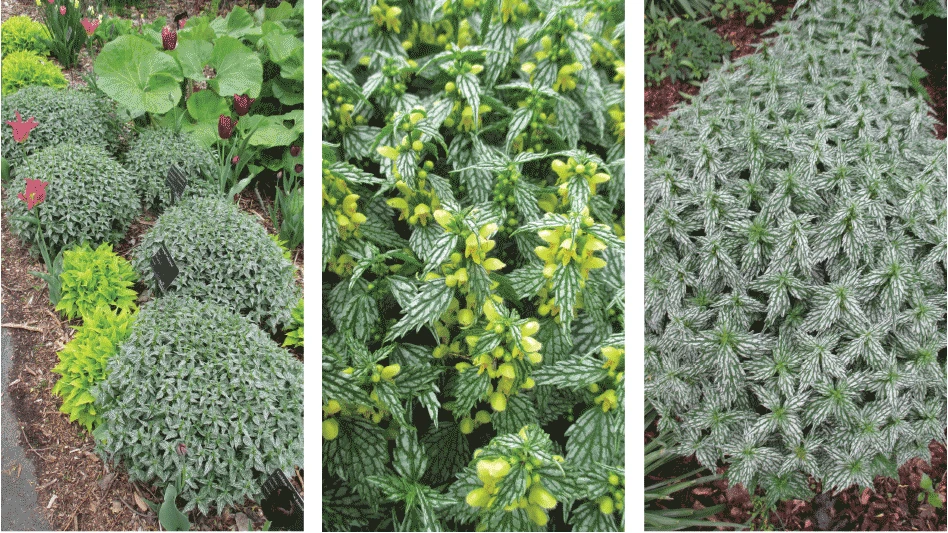
A large-scale reform of the importing and exporting process is nearing completion, and the brokers handling plant imports can expect some changes by the end of 2016.
In early 2014, President Obama’s signed Executive Order 13659, Streamlining the Export/Import Process for America’s Businesses. The order mandated the completion of the International Trade Data System (ITDS) Single Window by Dec. 31, 2016.
In its current state, importing and exporting is a complex process involving 48 different government agencies and approximately 200 forms. Before the modernization effort began, the system was largely manual and paper-based, and required information to be keyed into multiple electronic systems. As a result, importers and exporters were often required to submit the same data to multiple agencies at multiple times, which is costly and time consuming for both the government and the international trade community.
The goal of the ‘Single Window’ is to create a simpler, more efficient experience. The system, which will be run by U.S. Customs and Border Protection (CBP), will streamline processes, data, and systems through which imports and exports are received. In the case of plant imports, it should also equip the federal agencies with better analysis capabilities, including the ability to track and address quarantine pest and plant health concerns more quickly.
To make the “single window” a reality, CBP has transitioned to a new data system known as the Automated Commercial Environment (ACE). This system is used to collect, process, and track data for imports/exports. ACE is the system, the single window through which all data must run. All main trade processing capabilities in ACE will be available by the end of the year. Once fully operational, ACE will provide a single, centralized access point to connect CBP, partner government agencies, and the trade.
Paper is the past
In the past, the plant importing process has been paper-based, says Craig Regelbrugge, senior vice president of industry advocacy and research at AmericanHort. An import permit and phytosanitary certificate were necessary. When live plants or propagative material arrive in the U.S., they are directed to a USDA-APHIS Plant Inspection Station for inspection and clearance.
“In the short term, the one thing that still remains ‘paper’ is the original, government-issued phyto,” Regelbrugge says. “Everything else will be electronic and if the system works as intended, it should ultimately be smoother. The concerns are in the transition.”
The transition has been occurring throughout the year. The USDA’s Animal & Plant Health Inspection Service (APHIS) completed its pilot program in August for core users. Lacey Act imports have been using the system since June.
Most plant imports are handled through customs brokers or other trade facilitators, who would be the ones most likely to work with the software providers in the interest of simplifying the interface for uploading data on plant consignments into ACE.
“We know the transition to ACE means additional work for you and may seem complicated, but we also know that once that work is complete, electronic filing will save you time and money,” wrote APHIS associate administrator Michael Gregoire in a June update on the ACE adoption process.
Linda Guy is co-owner of Plants Nouveau, a new plant introduction and marketing company. Her company helps connect plant breeders with growers, and when a client is overseas, Plants Nouveau uses a broker or agent when importing into the U.S. and Canada. She has spent some time looking into ACE in an effort to better understand the impact it will have on her broker/agents, as well as Plants Nouveau.
“Like most new software changes, this will take some time to get used to,” she says. “ACE is a government mandated program that leaves no alternative. So over time, we will all learn how to comply.”
Data entry
With only two years to make this overhaul happen, the colossal task of modernizing the system fell to CBP. To comply with the president’s December 2016 deadline, the CBP adjusted its own deadlines. A staggered approach helped the agency work incrementally while preparing for different requirements for different organizations. For plant imports, however, the crucial roles will be the broker and the software provider. The broker must familiarize themselves with the new software and data entry system to ensure a smooth transition.
“Importers typically work with a broker, and the brokers will be on the front lines,” Regelbrugge says. “But, if there are mistakes or other problems, they will result in delays that can translate to loss of quality or even loss of product. And if there are added costs, you can assume they will be passed along.”
When the U.S. Department of Homeland Security was formed, the agricultural inspection arm was moved from the USDA to the newly formed CBP, and CBP’s agriculture division continues to maintain close ties with the USDA. CBP and APHIS have a shared responsibility as part of the agricultural safeguarding continuum to protect America’s agriculture and natural resources from foreign plant pests and animal diseases. The agencies have distinct roles at the national and local levels, and those roles are complementary in nature. Additionally, APHIS is responsible for all agricultural quarantine and inspection training for CBP. APHIS establishes and promulgates regulations/policies, evaluates risk, provides pest identification, and prescribes remedial measures. CBP implements policies, establishes implementation guidelines, conducts inspections, makes regulatory decisions based on APHIS policies, intercepts pests, and applies safeguarding/remedial measures at ports of entry.
As the import process shifts away from paper and to the single window via ACE, more responsibility falls to the importing company and its broker, if it chooses to use one. It’s certainly a different setup than the way it’s been done in the past.
“The onus has been on the inspectors to capture whatever data the agency wants,” Regelbrugge says. “In the new system, the data entry burden shifts upstream to the importer and really the broker. What gets tough is when a plant shipment has dozens of taxa in it. All the data need to be correctly entered. The key will be in the software interface that brokers use.”
There are several dozen software vendors approved to develop software interfaces to facilitate this process.
From her research into the changes, Guy also believes the key to success will come from having strong software providers. These companies will be responsible for building the software that simplifies the entry process into a single window. Brokers and agents will have to implement the changes on their end, which makes some of them uncomfortable.
“They are used to working with tariff classification numbers, which group specific classifications under a single tariff number,” Guy says. “My understanding is that USDA wants to use genus/species, which could require extra input on behalf of the broker/agent, which in turn, could hike up the cost of importing.”
Inspection improvements
While the single window system should save time and money for the government and the importer, one of the major advantages of the ACE system is improved tracking of quarantines, pests and plant health concerns. APHIS has already moved to implement a targeting approach called “risk based sampling” (RBS). As part of this approach, the organization allocates its inspection resources toward those countries of origin and plant types that pose the greatest risk of transporting regulated pests. But APHIS’ historic focus has been on “country and commodity” combinations. By contrast, CBP focuses on the compliance of individual shippers, Regelbrugge says.
“As the systems and approaches are integrated, APHIS will eventually be able to determine whether the risk is high with, for example, Hedera spp. from Guatemala, or whether the problems are really farm or importer-specific,” he says. “This should enable a better system of ‘carrots and sticks’ — incentives for compliant shippers, more scrutiny for others.”
Regelbrugge says the biggest plant importing concerns are in the greenhouse/color crops area.
“More than one billion unrooted cuttings are imported each year for rooting and finishing by domestic growers,” he says. “And by their very nature, unrooted cuttings are highly perishable — basically you want to get from farm to U.S grower in 24 hours or less. On the woody plant side, things are somewhat less perishable and the trade tends to be a bit less continuous.”
The old system was riddled with paperwork and red tape, and it’s easy to see the allure of a simpler solution.
“I am very optimistic when thinking about the end results,” Guy says. “A single portal should make the process much more efficient and will also give our government agencies one place to access important data for tracking quarantine issues and plant health problems.”
For more: www.cbp.gov/ace
Get curated news on YOUR industry.
Enter your email to receive our newsletters.
Explore the October 2016 Issue
Check out more from this issue and find your next story to read.
Latest from Nursery Management
- NewGen Boxwood added to Proven Winners ColorChoice line
- Terra Nova releases new echinacea variety, 'Fringe Festival'
- American Horticultural Society names winners of 2025 AHS Book Awards
- Nufarm announces unified brand
- American Horticultural Society announces winners of 2025 Great American Gardeners Awards
- Shifting the urban environment
- The Growth Industry Episode 3: Across the Pond with Neville Stein
- What's in a name?







